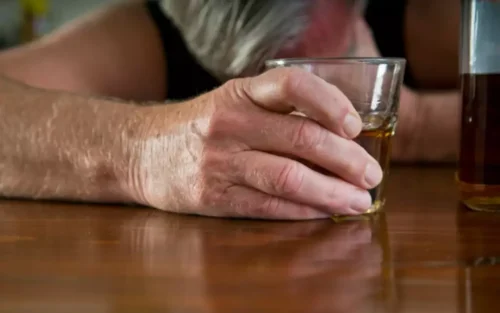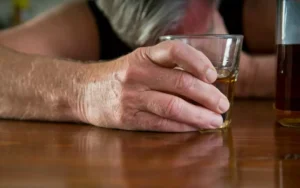MDMA Detection Times: How Long Molly Stays In Your System

Is a licensed and practicing pharmacist and medical writer who specializes in different substances, the effects of substance abuse, and substance use disorder. MDMA’s maximum blood concentration peaks at around two hours, though blood tests can detect MDMA up to 48 hours after the last dose was taken. MDMA is detectable in urine samples for up to four days, though it can sometimes be removed from the system within 48 hours. When someone takes a large dose of molly, however, these enzymes can become overwhelmed.
Is there anything you can do to metabolize it faster?
- Molly is usually detectable in bodily fluids for one to three days after ingestion.
- Stephanie also has an interest in animal-assisted psychotherapy where she and her dog are certified as an official therapy dog team.
- Its concentration peaks after two hours before beginning to decrease at four hours.
When you smoke crack cocaine, it reaches your bloodstream rapidly and heads to the brain – you will feel high very quickly. The liver enzymes will break down the drug into crack cocaine metabolites in urine that are much easier to eliminate – these metabolites will show up during the crack cocaine testing. In this article, we will get detailed insights into how long crack stays in your urine, blood, and hair. We will also learn accurate timelines for drug detection, the factors that affect results, and the variables that influence the crack cocaine urine detection time. Blood tests provide one of the shortest MDMA detection windows, generally identifying the drug for 48 hours.

Metabolizing molly

Ecstasy can remain in the Halfway house urine, blood, and oral fluids for up to a few days on average, with traces detectable in samples of hair for up to 90 days. Scientists continue to research effective treatment options for withdrawal from Molly, but there are currently no specific treatments for it. Some people have reported behavioral therapies to be helpful in treating MDMA addiction. However, this can be tricky because ecstasy is often cut with other drugs that are highly addictive. Enzymes in the liver process the drug into smaller compounds—metabolites—eliminated through urine and feces. The liver does most of the work, but the kidneys also help filter and remove the drug from the body.
Effects of Molly (MDMA)
Stephanie Behrens is a Licensed Marriage and Family Therapist and Licensed Professional Clinical Counselor, who earned her Masters in Clinical Psychology at Pepperdine University. She received her Bachelor’s degree in Psychology from the University of California, Santa Barbara. Stephanie has been working in the treatment industry since 2014 and joined the Anchored Tides Recovery team as Clinical Director and Clinical Supervisor in 2024. She also enjoys working as a therapist and specializes in substance abuse, complex trauma, co-dependency, and anxiety/depressive disorders. Stephanie also has an interest in animal-assisted psychotherapy where she and her dog are certified as an official therapy dog team. When she is not working, she enjoys spending time with family and friends and her Golden Retriever.
Some athletic associations, courts, and drug abuse treatment centers also require drug testing. If you or someone you love is struggling with Molly use, The Recovery Village Ridgefield is here to help. Contact us today to learn more about MDMA addiction treatment programs that can help you begin a healthier, drug-free life in recovery. These drugs first became popular at raves and nightclubs, and they have continued to grow in popularity as a common party drug. Both Molly and ecstasy are classified as Schedule I drugs under the Controlled Substances Act, meaning these drugs are highly addictive and there is no accepted medical use for them.
How Long Does Ecstasy Stay in Breastmilk?
- Hillary not only enjoys being part of the Anchored Tides family, but showing up as a wife, daughter, sister, aunt, and friend to those around her.
- Stephanie Behrens is a Licensed Marriage and Family Therapist and Licensed Professional Clinical Counselor, who earned her Masters in Clinical Psychology at Pepperdine University.
- People may start to feel the effects of molly around 20 minutes to one hour after taking it.
Ecstasy (MDMA) can be detected in urine for up to 3-5 days after the last use. The exact duration depends on various factors, including dosage, frequency of use, and individual metabolism. Ecstasy’s effects can generally be felt within 30 minutes to an hour after ingestion, with peak effects occurring around 1.5 to 3 hours. The duration of these effects typically lasts for about 3 to 6 hours, depending on the individual’s metabolism and dosage.

Calls to any general helpline will be answered by treatment providers, each of which is a paid advertiser. Any treatment center receiving calls from the site is a paid advertiser. It’s impossible to create how long does mdma stay in urine a math model describing the body processes precisely. Daily smokers will have a lot more THC accumulated in the body, and it will be released into the blood for a long time even after you stop smoking.
- Any form of substance abuse responds well to treatment, and the sooner you get help the better due to the progressive nature of addiction.
- The timeline depends on the dose and individual factors, including the frequency of doses, metabolism rate, and body mass and composition.
- Addiction Resource is not a healthcare provider, nor does it claim to offer sound medical advice to anyone.
- Neurochemically, MDMA promotes the release of the monoamines serotonin, dopamine, and noradrenaline, and it elevates serum oxytocin.

If you’ve recently experimented with Molly or MDMA, gaining a thorough understanding of how long it remains detectable in your urine is paramount for several critical reasons. Taking molly also increases the levels of a hormone that leads to fluid retention in the body, which can cause an electrolyte imbalance if you drink lots of fluids while using the drug. When you choose outpatient treatment at Renaissance, you can meet your daily commitments while getting effective addiction treatment at one of our facilities. We treat all types of addiction, including ecstasy addiction, at our luxury beachside rehabs in California and Florida.